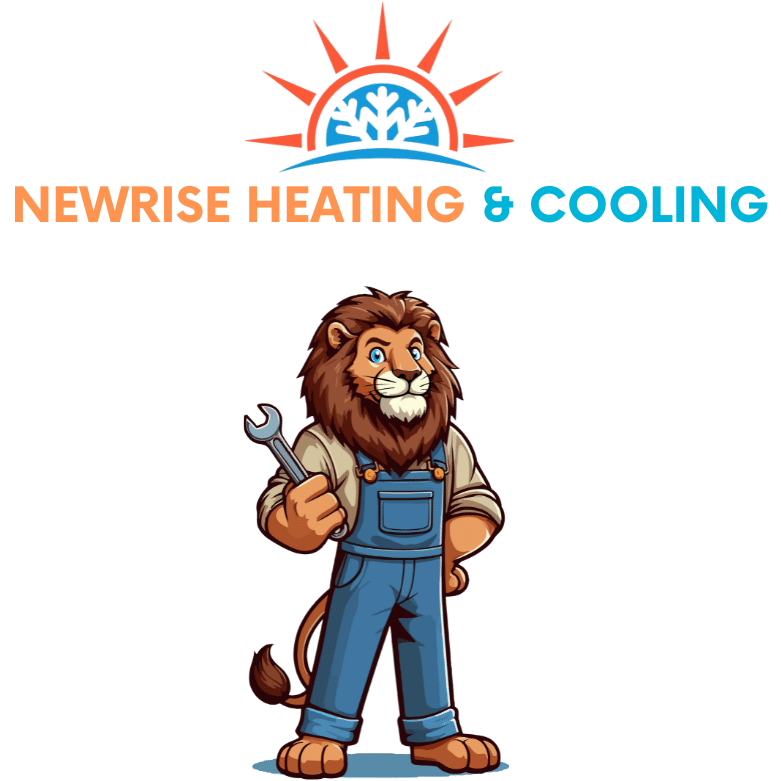Table Of Contents:
- Key Takeaways
- Why Regular Cleaning and Inspection Is Crucial for Your Furnace
- Understanding the Components of Your Furnace
- Effective Steps for Cleaning Your Furnace
- Conducting a Thorough Inspection of Your Furnace
- Recognizing Signs Your Furnace Needs Maintenance
- Deciding Between DIY and Professional Services
Is your furnace running as efficiently as it should? Regular cleaning and inspection are essential to keep your heating system functioning well and to prevent issues like contamination from water vapor or clogged pipes. In this article, you’ll learn effective strategies for cleaning your furnace, understanding its components, and recognizing key signs that it needs maintenance. By following these tips from NewRise Heating and Cooling, you’ll ensure your system runs smoothly, saving you time and money on costly repairs. Let’s tackle the common problems that can affect your engine and keep your home comfortable.
Key Takeaways
- Regular cleaning and inspection enhance your furnace‘s efficiency and extend its lifespan
- Check and replace air filters every 1-3 months for optimal airflow
- Inspect components like burners and heat exchangers for debris to ensure safe operation
- Address unusual noises or odors promptly to prevent costly repairs and safety hazards
- Consider professional inspections to catch issues that DIY maintenance might overlook
Why Regular Cleaning and Inspection Is Crucial for Your Furnace
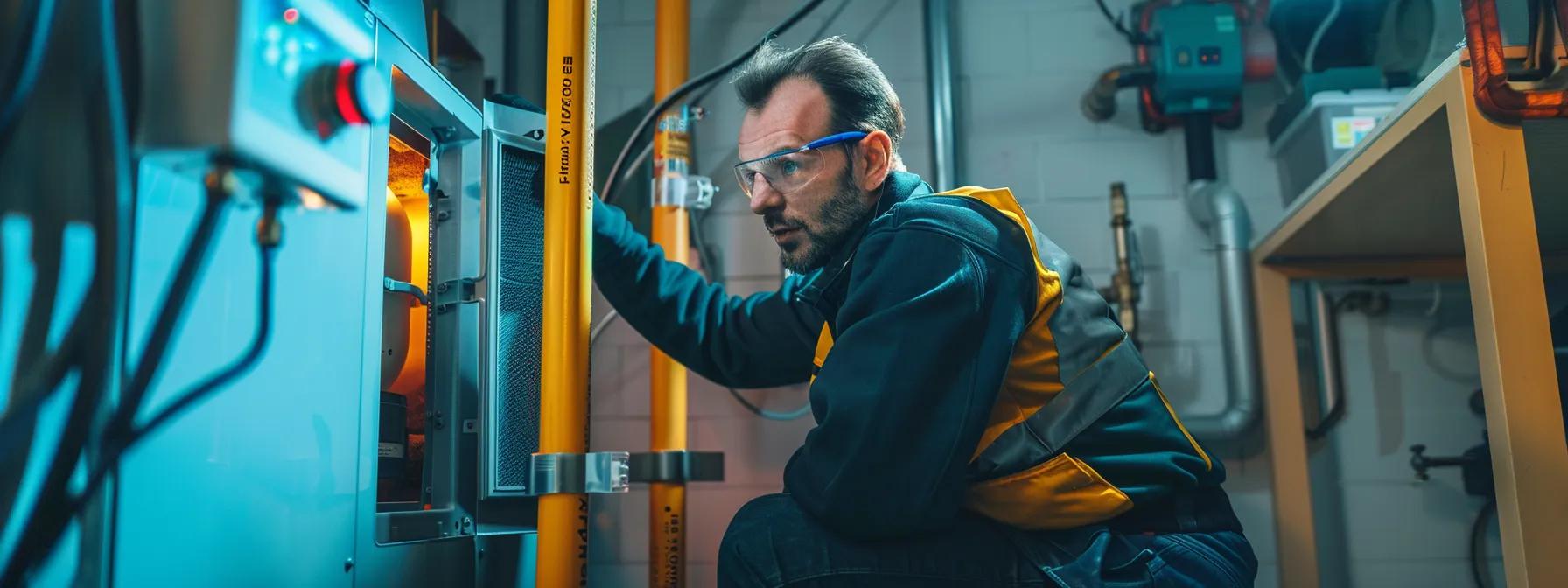
Regular cleaning and inspection of your furnace is essential for its efficiency and longevity. Dust and debris can accumulate over time, impacting the furnace‘s performance.
A clean furnace leads to better airflow and heat distribution throughout your home. This is especially true for oil burners, which rely on a clean flame for optimal operation.
Regular checks also help you identify worn parts, such as belts. If belts wear out, they can affect your furnace’s ability to function properly, leading to costly repairs.
Vacuuming and clearing away dust can prevent potential fire hazards. By ensuring that your furnace is free from buildup, you can keep your home safe and comfortable.
To maintain your furnace effectively, create a consistent schedule for cleaning and inspection with newrise heating and cooling. This proactive approach will help you enjoy a clean furnace and reduce the chances of unexpected breakdowns:
- Ensure proper airflow by cleaning filters regularly.
- Inspect the flame in your oil burner for stability.
- Check and replace belts if they’re showing signs of wear.
- Use a vacuum to remove dust and debris from the area.
- Schedule professional inspections annually for thorough care.
Your furnace needs care. Understanding its parts will help you keep it running strong.
Understanding the Components of Your Furnace
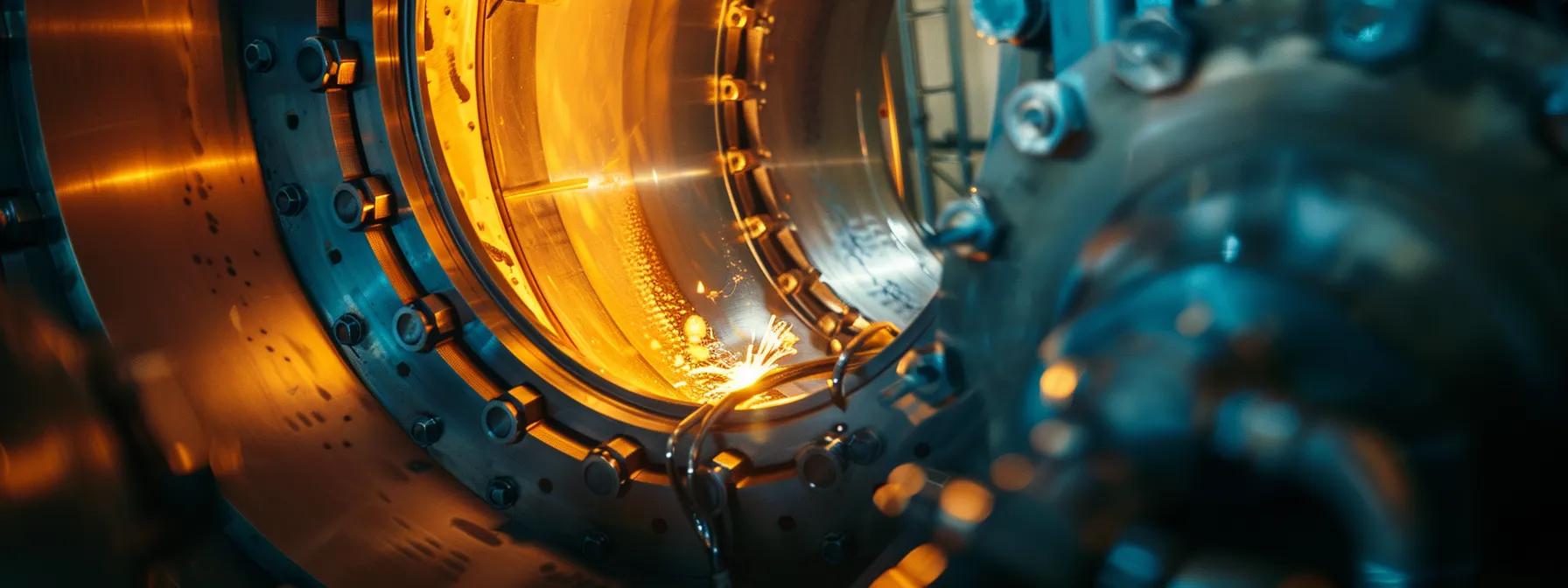
Start with identifying key areas of your furnace needing attention. A thorough checklist can help you focus on important components like metal parts, filters, and the burner system. Regular inspections of these areas will ensure your natural gas furnace operates efficiently and uses energy wisely. Next, let’s dive into specific strategies for cleaning and inspecting each component effectively.
Identifying Key Areas to Clean and Inspect
When it comes to furnace cleaning, focusing on key components can significantly improve your system’s efficiency. Start by checking the filters, as dirty filters restrict airflow, leading to unnecessary strain on your furnace. This strain can also create noise that signals issues within the system, making regular inspection essential for a quiet operation.
Next, pay attention to the burner and heat exchanger. These areas tend to collect debris, which can impact performance and safety. A clean burner ensures that your furnace operates effectively, while a well-maintained heat exchanger promotes proper airflow, helping you save on energy costs.
It’s also smart to inspect your boiler if you have one alongside your furnace. Regular checks can prevent buildup that causes malfunctioning or dangerous situations. By implementing these straightforward strategies, you’re not just enhancing your furnace‘s performance; you’re also prioritizing your safety and comfort at home:
| Component | Action | Importance |
|---|---|---|
| Filters | Clean or replace regularly | Ensures proper airflow |
| Burner | Inspect for debris | Promotes efficient operation |
| Heat Exchanger | Check for proper airflow | Enhances energy efficiency |
| Boiler | Regular inspections | Prevents unsafe conditions |
Now you know what makes your furnace work. Let’s look at how you can keep it clean and running strong.
Effective Steps for Cleaning Your Furnace
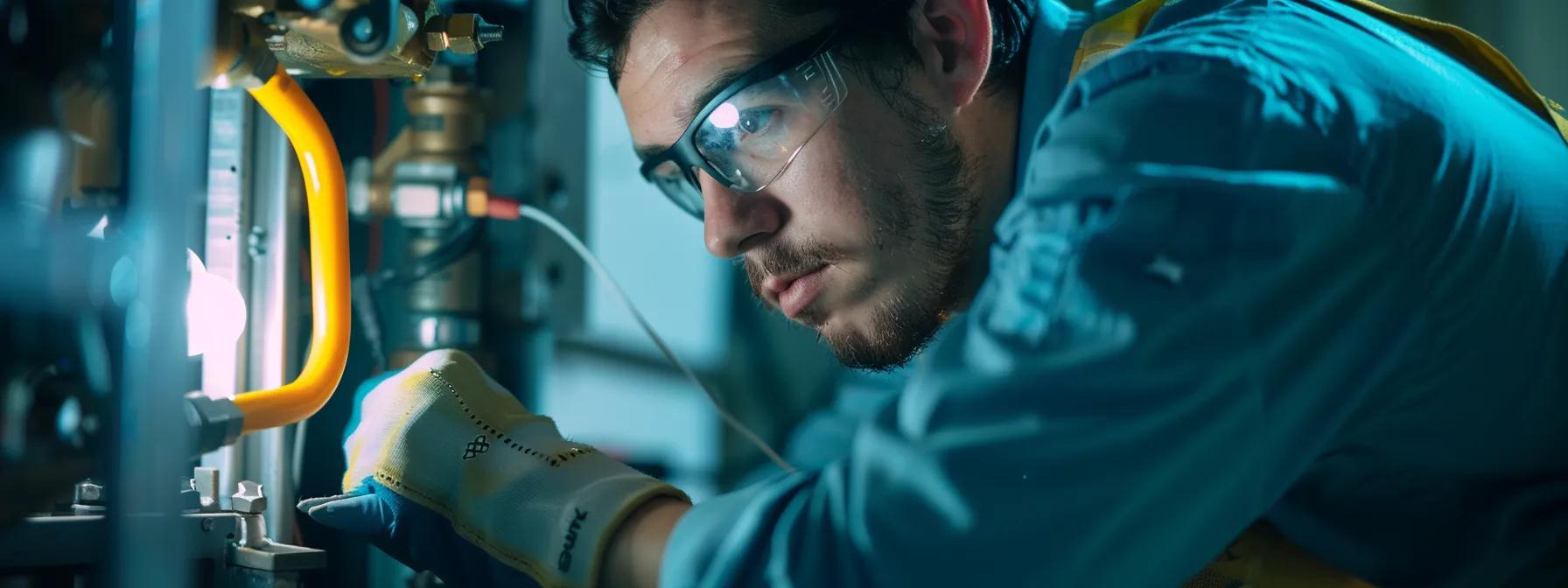
Before diving into cleaning your furnace, safety comes first. Ensure you shut down the furnace properly, setting the stage for a safe maintenance process. You’ll tackle key areas such as the combustion chamber, burners, heat exchanger, blower, and air filter, ensuring optimal airflow. Lastly, refreshing the ductwork will further enhance your furnace’s performance. Let’s break these steps down for effective furnace maintenance.
Ensuring Safety Before Cleaning
Before you start cleaning your furnace, it’s vital to prioritize safety. Begin by shutting down the power to the unit to prevent any accidental start-up while you are working. This includes turning off the circuit breaker or unplugging the furnace, ensuring you can work without fear of electrical hazards.
Next, if your system uses oil or gas, make sure to turn off the fuel supply. In addition to that, take a moment to check for any visible leaks around the pump or lines. This preliminary troubleshooting can save you from potential dangers and keep your home safe during the cleaning process.
Finally, gather all necessary cleaning supplies such as a vacuum, lubricant for moving parts, and any air duct cleaning tools you may need. Having these on hand will streamline the process, allowing you to work efficiently and effectively. When you align all these steps, you set yourself up for a successful furnace maintenance session:
- Shut down the power to the furnace.
- Turn off the fuel supply and check for leaks.
- Gather all necessary cleaning supplies.
Shutting Down the Furnace Properly
When shutting down your furnace, the first step is to turn off the power to the machine. This prevents any electrical issues during your cleaning process and ensures that the system won’t inadvertently turn back on while you’re working. Make sure you locate the circuit breaker and switch it off before proceeding with any maintenance.
Next, it’s crucial to turn off the fuel supply, especially for oil or gas furnaces. By doing this, you eliminate the risk of carbon monoxide leaks, which can lead to dangerous air pollution inside your home. Taking a quick look for visible leaks around the fuel lines or connections helps you ensure that everything is secure and ready for maintenance.
To wrap things up, gather all cleaning supplies before diving into the task. Having a vacuum, lubricant for moving parts, and any duct cleaning tools handy streamlines the process and gets your furnace ready for optimal performance. Being organized this way reduces the risk of forgetting essential steps during your furnace cleaning session:
| Step | Action | Purpose |
|---|---|---|
| Shut down power | Turn off circuit breaker | Prevent electrical hazards |
| Turn off fuel | Stop fuel supply | Eliminate carbon monoxide risk |
| Gather supplies | Collect cleaning tools | Streamline maintenance process |
Cleaning Burners, Heat Exchanger, and Blower
Cleaning the burners, heat exchanger, and blower is an essential part of your annual furnace maintenance. Over time, particulates can build up in these areas, affecting performance and reducing efficiency. A thorough cleaning not only helps maintain optimal airflow but also enhances the longevity of your heating system, ensuring it runs smoothly when you need it most.
Start by carefully inspecting and cleaning the burners. A clean burner contributes to efficient combustion and limits the chance of unsafe emissions, making it a critical focus during your HVAC maintenance routine. If you notice dirt or debris, use a soft brush or a vacuum to clear any unwanted buildup that could affect the flame‘s stability.
Don’t forget to check the heat exchanger and blower while cleaning. These components work together to distribute heat throughout your home, so keeping them free of blockages is key. Regularly addressing these areas helps prevent unnecessary repairs and keeps your furnace functioning optimally, providing you with reliable comfort and efficiency year-round.
Replacing or Cleaning the Air Filter
When it comes to maintaining your heating system, replacing or cleaning the air filter is one of the simplest yet most effective steps you can take. A clean air filter ensures proper airflow into your furnace, allowing the nozzle to deliver fuel efficiently and supporting optimal combustion within the heat exchanger. Not only does this improve the overall performance of your system, but it also helps in saving you on energy bills.
Over time, air filters can become clogged with dust and debris, which restricts airflow and may lead to strain on your heating system. This can cause the heat pump or furnace to work harder than necessary, potentially resulting in premature wear or failure of components. Regularly checking and replacing your air filter keeps your system running smoothly and extends its lifespan.
Depending on the type of filter you use, you could clean it to remove buildup or opt for a replacement if it’s too damaged. If you are unsure of how often to check your filter, consider doing so at least every 1-3 months, especially during peak heating seasons. Taking this proactive approach will enhance the efficiency of your heating system and ensure that you stay warm and comfortable all season long.
Refreshing the Ductwork
Refreshing your ductwork is a critical part of your furnace maintenance service that you shouldn’t overlook. Dust, debris, and allergens tend to build up in the ducts over time, which can restrict airflow and cut down on your system’s efficiency. This not only affects how well your furnace heats the space but can also lead to potential leaks, including gas leaks, that undermine your home’s safety.
To keep your furnace running smoothly, it’s a good idea to inspect the ductwork for any visible damage such as holes or tears. If you notice signs of wear, repairing or replacing sections is necessary. Remember to look closely at the bearings and oil filters within the system, as any malfunction here can also lead to increased wear on your furnace and affect the airflow through the ducts.
You can take matters into your own hands by vacuuming out the ducts or scheduling a professional cleaning service. A clean duct system ensures that your furnace operates efficiently, reducing strain and helping you avoid unnecessary repairs. By tackling duct cleaning regularly, you can maintain a safe, efficient heating system that keeps your home comfortable.
Cleaning the furnace is just the beginning. Next, you’ll want to look closely at its parts to ensure everything works as it should.
Conducting a Thorough Inspection of Your Furnace
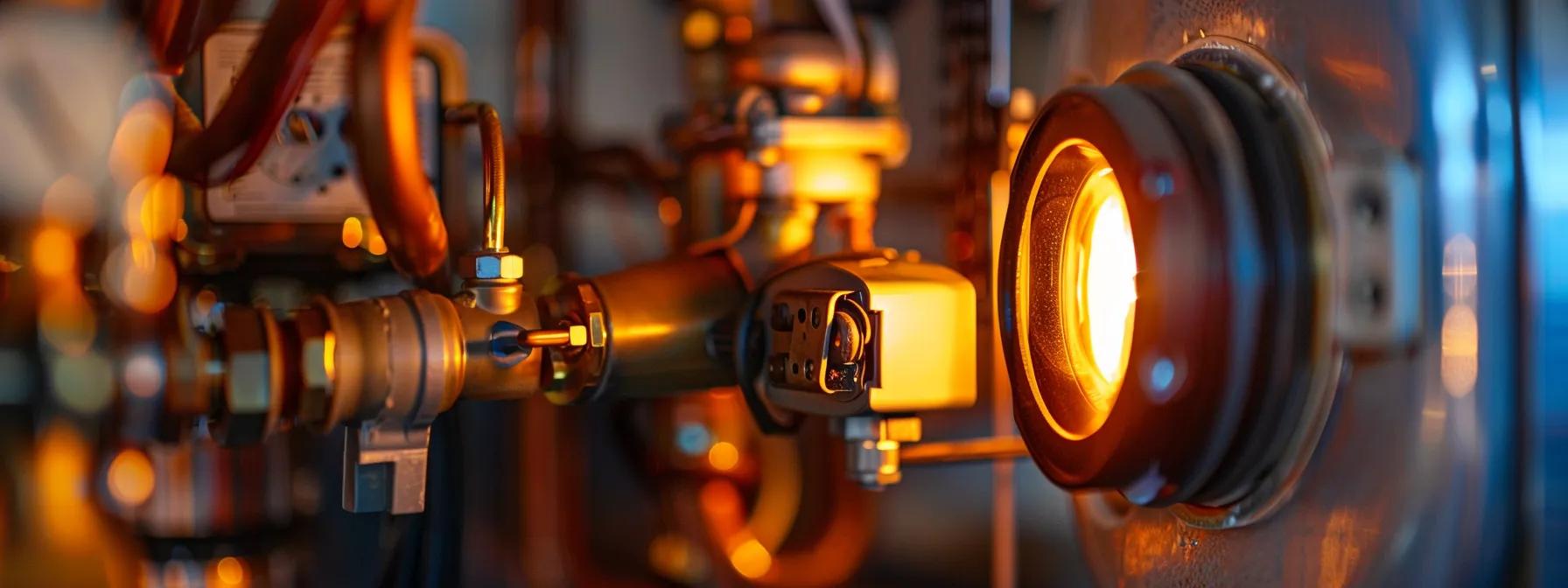
When you conduct a thorough inspection of your furnace, focus on checking the ignition system, assessing the venting system, and inspecting the thermostat and controls. Look closely at the circuit breaker to ensure it functions properly and examine the chimney for any dust buildup that could restrict airflow. Pay attention to the sensor, as any issues here can affect your furnace‘s performance.
This systematic approach not only helps identify potential problems but also enhances the overall efficiency of your heating system. By keeping these areas in check, you ensure reliable heating for your home and prevent costly repairs down the line.
Checking the Ignition System
Checking the ignition system is a key part of maintaining your furnace, especially for gas units. This system is responsible for lighting the burners, and if it isn’t functioning properly, you could face issues like incomplete combustion or even a dangerous buildup of carbon monoxide in your home. Regular inspection of the ignition components can prevent potential hazards and ensure that your furnace runs smoothly.
As you inspect the ignition system, pay close attention to the thermostat settings. Make sure it responds correctly and registers your desired temperature. If there’s any wear on the ignition electrodes or if they appear dirty, cleaning them should be a priority. Regular HVAC cleaning can boost the performance and safety of your furnace, allowing it to operate efficiently and safely.
It’s best to make this inspection a routine part of your furnace maintenance plan. By proactively checking the ignition system, you reduce the chances of unexpected breakdowns, ensuring your home stays warm throughout the colder months. Staying on top of these checks will save you time and money while keeping your environment safe and comfortable:
- Inspect ignition components for wear and cleanliness.
- Check the thermostat settings and functionality.
- Ensure proper gas flow to the burners.
Assessing the Venting System
Assessing the venting system of your furnace is an often overlooked yet crucial step in ensuring optimal performance. Start by inspecting the flue, which is responsible for directing exhaust gases outside your home. Any blockages in the flue can lead to dangerous buildups of carbon monoxide, impacting both your furnace’s efficiency and your indoor air quality.
Make sure to check for cracks or rust in the vent pipes as well. These issues can not only compromise your furnace‘s function but also create additional safety hazards. If you find any damage, reaching out to a furnace cleaning service can help you address the problem quickly and effectively. Regular maintenance and inspections can help prevent more serious issues down the line.
Finally, maintain clear pathways around the venting system to ensure proper airflow. This simple step can improve your furnace‘s efficiency and contribute to better overall air quality in your home. If you’re unsure about the condition of your venting system, don’t hesitate to email an HVAC professional for advice or assistance with inspections. Keeping your furnace and its venting system clean is key to a safe and comfortable home environment.
Inspecting the Thermostat and Controls
Inspecting the thermostat and controls is an important part of furnace service that should not be overlooked. This is where you set the temperature, so it’s good to ensure that everything is functioning as it should. Regular inspection of your thermostat helps identify any inaccuracies in temperature readings that can lead to increased energy bills due to improper heating.
While checking your thermostat, make sure to inspect the air filter as well. A clogged air filter can restrict airflow, making it difficult for your furnace to operate efficiently. Also, ensure the pilot light is burning properly; a weak or inconsistent pilot can indicate issues that need attention. Addressing these factors can help reduce the buildup of pollutants in your home, keeping your indoor air quality in check.
Finally, take a moment to test the controls on your furnace. Adjust your thermostat settings and watch for the furnace to respond appropriately. If everything runs smoothly, you can feel confident that your heating system is working as it should. Regular inspections and maintenance give you peace of mind, knowing that your furnace is ready to keep you comfortable during colder months:
| Component | Action | Purpose |
|---|---|---|
| Thermostat | Check settings | Ensure accurate temperature readings |
| Air Filter | Inspect and clean or replace | Maintain airflow efficiency |
| Pilot Light | Observe flame stability | Confirm proper furnace operation |
| Controls | Test responsiveness | Ensure proper furnace activation |
Inspecting a furnace unveils its secrets. But recognizing the signs of needed maintenance can save you from unexpected chill.
Recognizing Signs Your Furnace Needs Maintenance
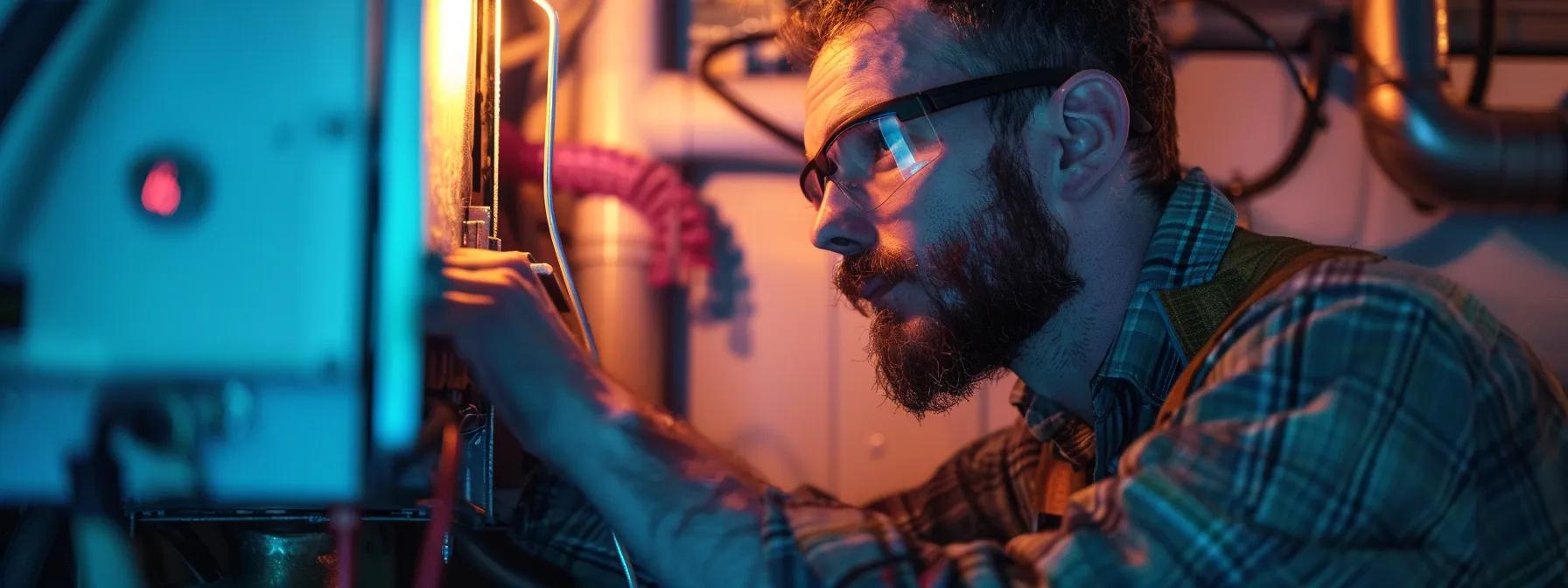
Listening for unusual noises from your furnace is a crucial sign it may need maintenance. Keep an ear out for odd sounds that could indicate dirt or soot buildup. Monitoring temperature issues, like inconsistent heating, is another important factor to consider. Lastly, unpleasant odors can signal underlying problems, highlighting the need for timely furnace repair or duct cleaning to ensure safe and efficient operation.
Listening for Unusual Noises
When you hear unusual noises coming from your furnace, it’s a clear sign that something may not be right. Sounds like rattling, popping, or squeaking can indicate issues like loose components or pressure problems that could affect efficiency. Keeping your ears open to these noises can help you catch problems early, preventing more costly repairs down the road.
Odd sounds might also hint at dirt buildup in the system, which can impact its performance. For instance, if your burners are dirty, you may notice a difference in the sound of combustion. Regularly brushing and cleaning these areas can help keep your furnace operating smoothly, ensuring air quality remains safe, especially for those with allergies.
If you’re unsure about the noises you hear, consulting a technician can provide peace of mind. A trained professional can conduct a thorough inspection, pinpoint any issues, and suggest cleaning or maintenance strategies to improve your furnace’s efficiency. Staying proactive can save you from unexpected breakdowns and enhance the comfort of your home.
Monitoring Temperature Issues
Monitoring temperature issues is crucial for ensuring your furnace operates efficiently. If you notice inconsistent heating in various areas of your home, it might indicate a problem with the unit. It could be a result of a dirty filter that restricts airflow, or there could be a more serious issue related to the burner system, especially if you’re using oil as your heating source. Checking these components regularly can help you catch these problems before they escalate.
It’s also important to keep an eye on your thermostat settings to ensure they align with the temperatures you’re experiencing. If your thermostat is not responsive, it might be a sign of a faulty component that needs attention. Ensure the electric power supply is stable to your unit as fluctuations can affect heating performance, compromising your warranty coverage if not addressed promptly.
If you discover that your furnace isn’t heating properly, using a vacuum cleaner to clear any dust buildup around the unit can make a difference. This simple step can improve airflow and performance. Don’t hesitate to consult with HVAC professionals if temperature issues persist, as they can provide insights tailored to your specific system. Keeping these practices in check will help you maintain a comfortable home environment during those chilly months.
Looking Out for Unpleasant Odors
If you notice any unpleasant odors coming from your furnace, it’s time to pay attention. A burning smell is often a sign of wear and tear on components, such as wires or belts, and can indicate overheating. If you smell a strong, acrid scent, it could mean that dust or debris buildup is being burned off, but it’s wise to monitor this and consult with an HVAC technician if it persists.
Another scent to be wary of is a metallic or sour odor, which may suggest corrosion or issues with the gas valve. This smell could point to potentially dangerous situations, including a carbon dioxide leak, which can lead to serious health hazards. If you detect a gas-like odor, it’s critical to turn off your furnace immediately and contact professionals for a thorough inspection.
Strong chemical or burning rubber smells are additional warning signs that indicate your furnace needs immediate attention. These odors could stem from electrical issues or materials starting to break down due to heat. Ignoring these signs can lead to costly repairs or even safety concerns, so addressing them promptly keeps your home safe and your heating system running smoothly.
When your furnace shows it needs attention, the next question surfaces: Do you take it on yourself or call in the pros? Weighing these options will greatly impact both your comfort and your wallet.
Deciding Between DIY and Professional Services
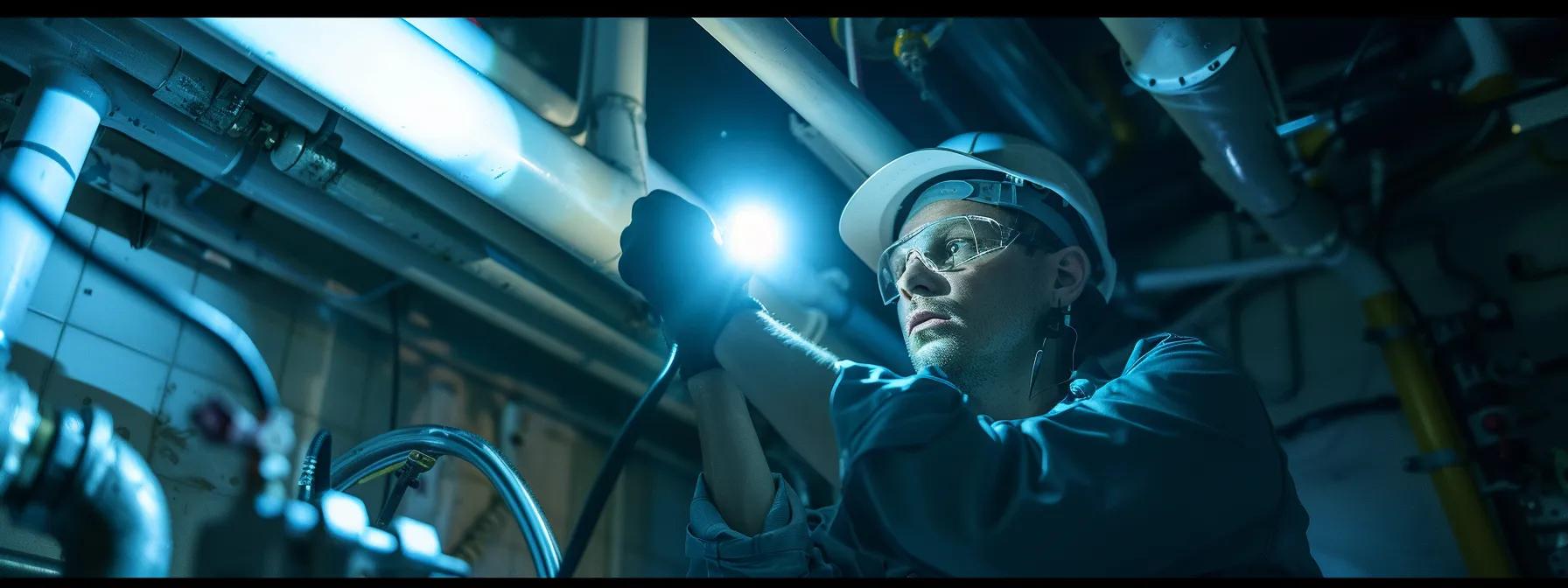
When it comes to maintaining your gas furnace, evaluating your skills for furnace maintenance is essential. You’ll want to consider understanding the benefits of professional inspections, especially regarding the flue pipe and any wiring hazards. Additionally, weighing the cost considerations for furnace services can help you make informed decisions on whether to tackle this maintenance yourself or call in the pros.
This section will guide you through assessing your capabilities, the advantages of hiring professionals, and how to budget for both DIY and expert services. Being aware of these factors ensures you keep your furnace running smoothly and safely.
Evaluating Skills for Furnace Maintenance
Before you decide whether to tackle furnace maintenance yourself or call in the experts, it’s important to assess your own skills. If you’re comfortable working with tools and have experience with home repairs, you might handle basic tasks like cleaning filters and inspecting burners. However, if you’re not familiar with furnace components, it’s best to consider professional help to avoid potential safety risks.
Even if you feel confident with some DIY tasks, certain elements of furnace maintenance require specialized knowledge. For instance, assessing the venting system or dealing with gas lines can be challenging and may pose hazards if done incorrectly. Knowing when to seek help from a professional can save you time and money while ensuring your home stays safe and warm.
Think about your comfort level with potentially hazardous situations, such as electrical work or gas handling. If you’re uncertain about any steps in the maintenance process, hiring a qualified technician can give you peace of mind. They have the training and expertise to conduct thorough inspections and perform necessary repairs, ensuring your furnace operates efficiently for years to come.
Understanding the Benefits of Professional Inspections
When you consider professional inspections for your furnace, you’re opting for a thorough assessment that DIY efforts might miss. Trained technicians bring experience and specialized tools to inspect components like the ignition system and venting areas, ensuring everything runs smoothly. They can spot potential issues before they become costly repairs, giving you peace of mind knowing your system is safe and functional.
Furthermore, professional inspections aim to enhance the efficiency of your heating system. They will clean hard-to-reach areas, ensuring that nothing is obstructing airflow, which can save you money on energy bills in the long run. By investing in a professional service, you’re not just addressing current problems; you’re also preventing future headaches down the road.
Finally, remember that mistakes in furnace maintenance can lead to safety hazards, especially if you’re handling gas lines or electrical components. A professional technician is well-versed in the proper protocols, helping to keep your home safe from carbon monoxide leaks and other risks. Choosing to rely on their expertise means you can relax and enjoy a cozy, worry-free environment during the colder months.
Cost Considerations for Furnace Services
When considering the costs associated with furnace services, you need to evaluate both DIY approaches and professional help. Tackling basic tasks like cleaning filters is a budget-friendly option that you can manage without spending much. However, remember that more complex maintenance or repairs could lead to increasing costs if you aren’t fully equipped or knowledgeable.
Using professional services can seem more expensive upfront, but this investment pays off in the long run. Technicians bring specialized tools and experience that allow them to spot issues you might miss, which can prevent costly repairs down the line. Seeing the furnace operate efficiently because of their expertise can also lead to savings on energy bills, making it a worthwhile consideration.
Crafting a budget for furnace maintenance involves weighing these costs against the risks of neglecting your system. If you decide to go with professional services, account for service fees as well as potential annual cleaning costs. On the other hand, if tackling tasks yourself, consider the tools you’ll need and the time investment required to ensure your furnace runs smoothly:
- Assess your skill level for DIY tasks.
- Compare costs of professional inspections versus DIY cleaning.
- Evaluate potential long-term savings from efficient operation.



